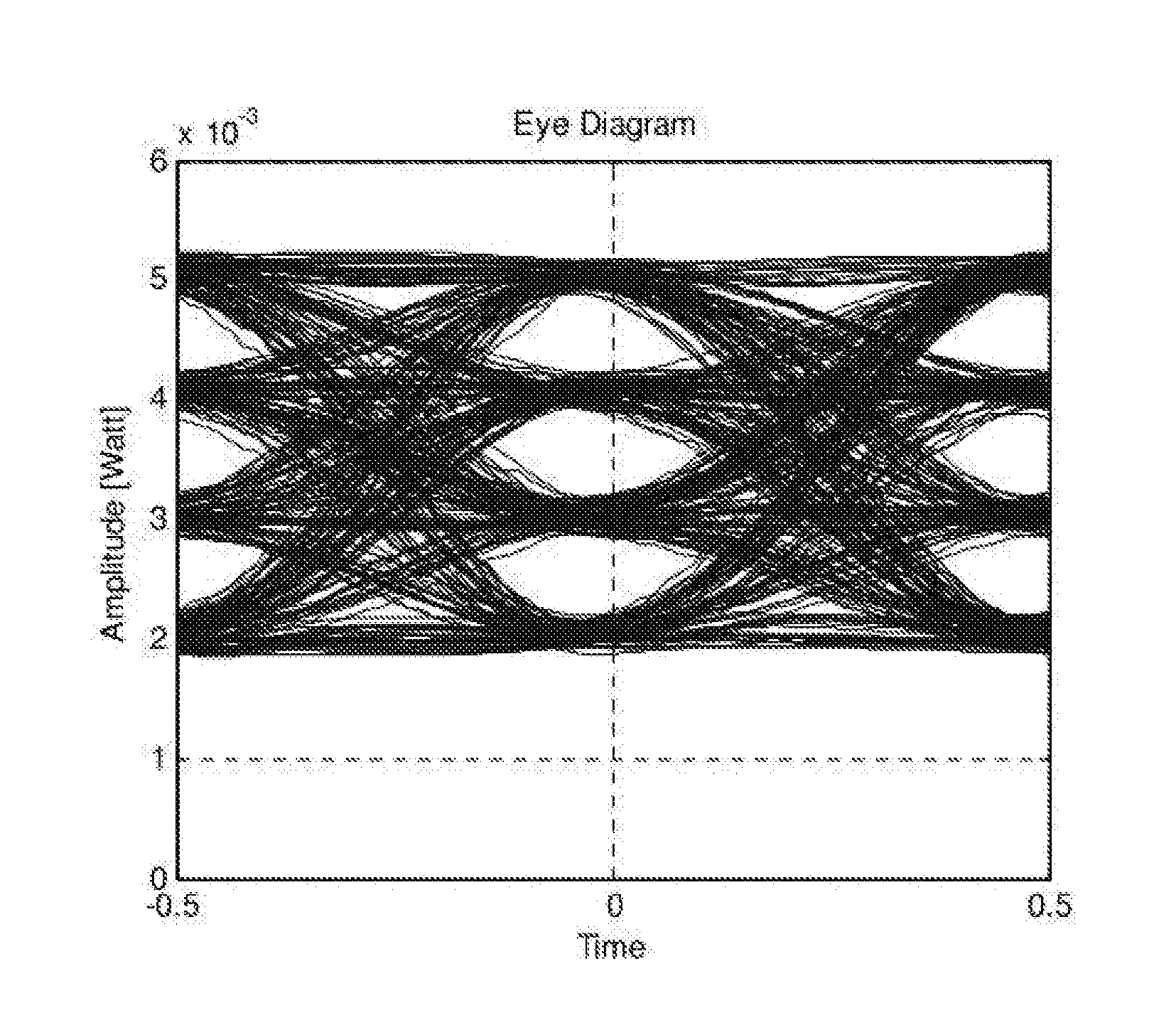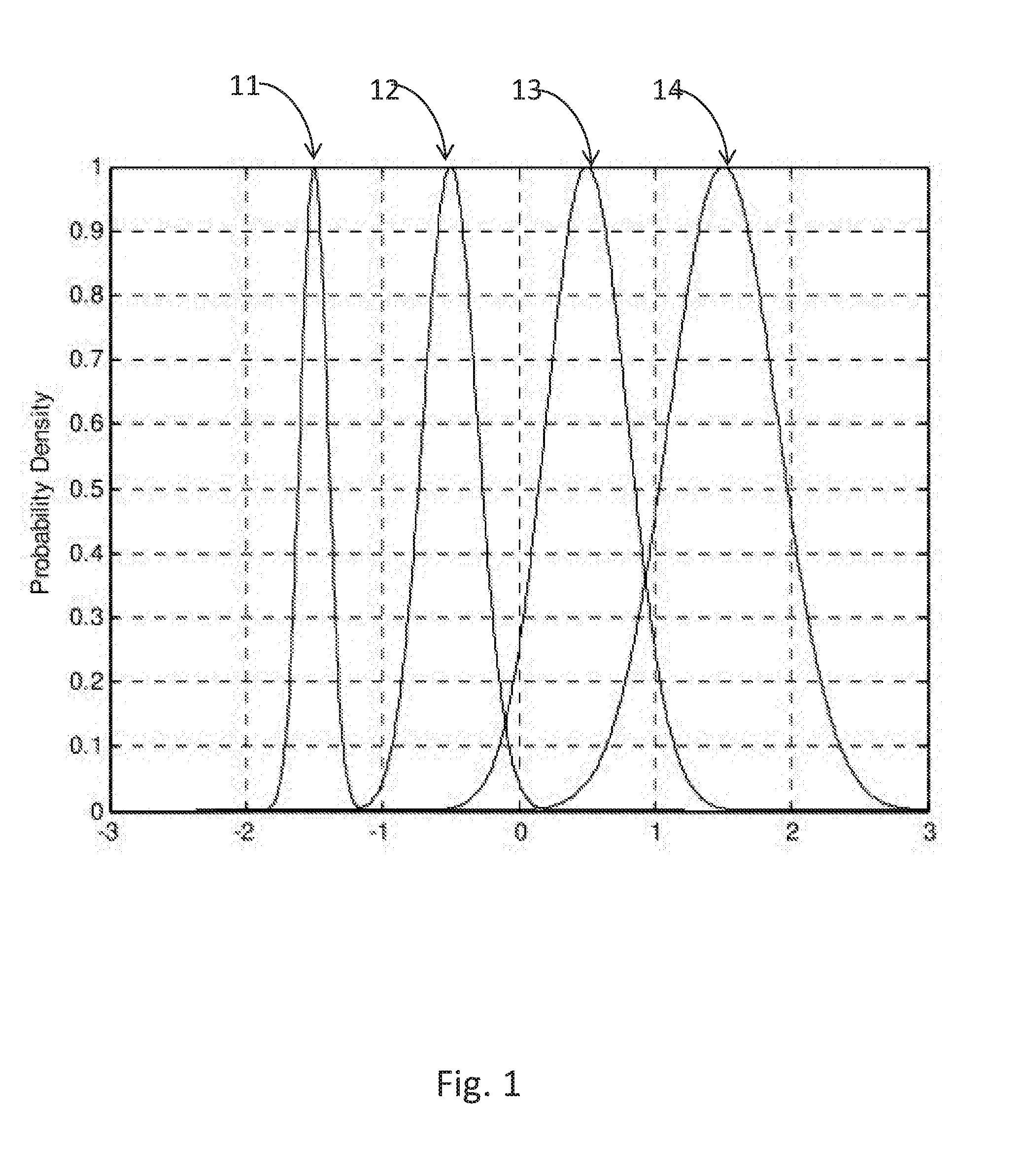Optimization of bit error rate performance of high order modulated optical signals having signal-dependent noise
a high-order modulation and optical signal technology, applied in the field of optical communication systems, can solve the problems of signal-dependent noise and various types of impairment in optical communication systems, and achieve the effects of reducing the reducing the required optical transmission power, and reducing the required dc level of optical signals
- Summary
- Abstract
- Description
- Claims
- Application Information
AI Technical Summary
Benefits of technology
Problems solved by technology
Method used
Image
Examples
Embodiment Construction
[0025]The present invention introduces a method for optimizing general performance of an optical communication link over the following dimensions:[0026]a. electrical signal power;[0027]b. optical signal power;[0028]c. noise power and statistical distribution; and[0029]d. transmitter non-linearity.
[0030]According to the present invention, a method for reducing signal-dependent noise in a multiple level optical communication signal is proposed. The reduction is achieved by introducing larger spacing between the higher power levels while introducing lower spacing between the lower power levels, so that the Symbols' Error Rate (SER—the error associated with the symbols) at the higher levels will be similar to the SER at low levels.
[0031]It is well known that the input-to-output transfer function of optical modulators is commonly nonlinear. This nonlinearity of the optical modulator can be utilized in a beneficial way to achieve both (1) intensity spacing optimization, in order to reduce...
PUM
 Login to View More
Login to View More Abstract
Description
Claims
Application Information
 Login to View More
Login to View More - R&D
- Intellectual Property
- Life Sciences
- Materials
- Tech Scout
- Unparalleled Data Quality
- Higher Quality Content
- 60% Fewer Hallucinations
Browse by: Latest US Patents, China's latest patents, Technical Efficacy Thesaurus, Application Domain, Technology Topic, Popular Technical Reports.
© 2025 PatSnap. All rights reserved.Legal|Privacy policy|Modern Slavery Act Transparency Statement|Sitemap|About US| Contact US: help@patsnap.com



